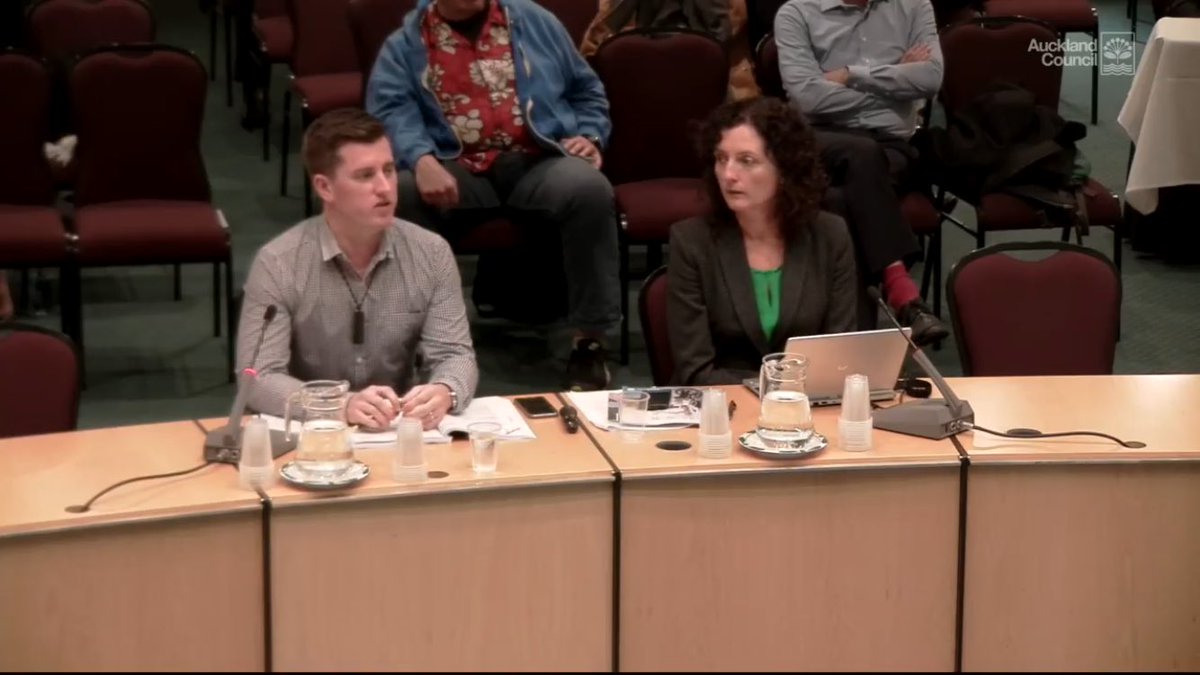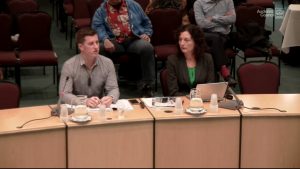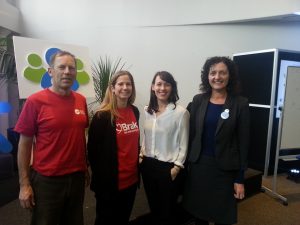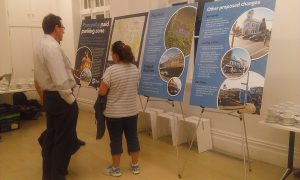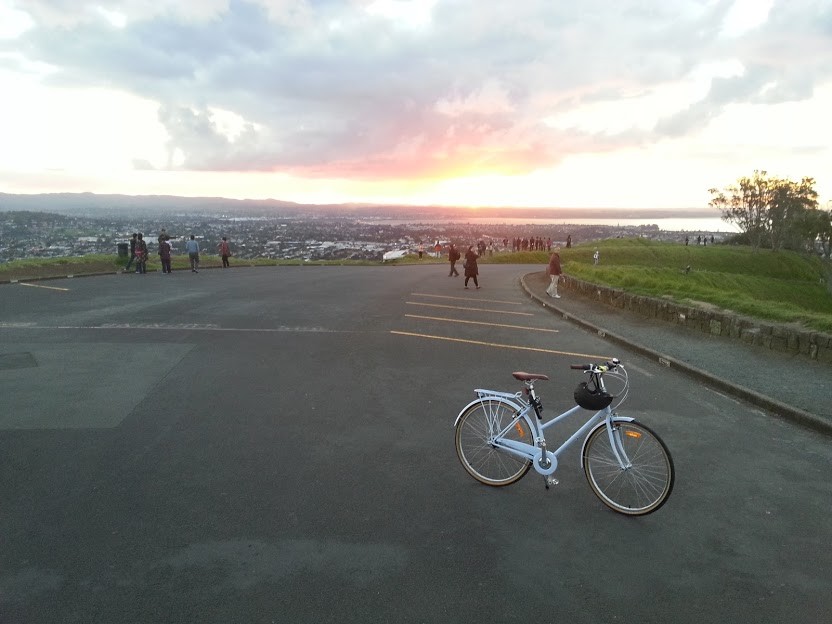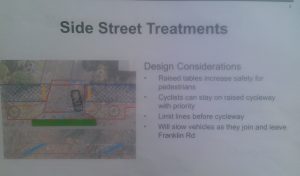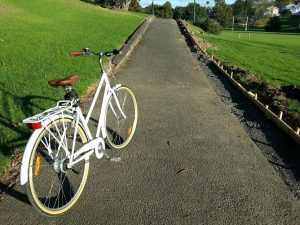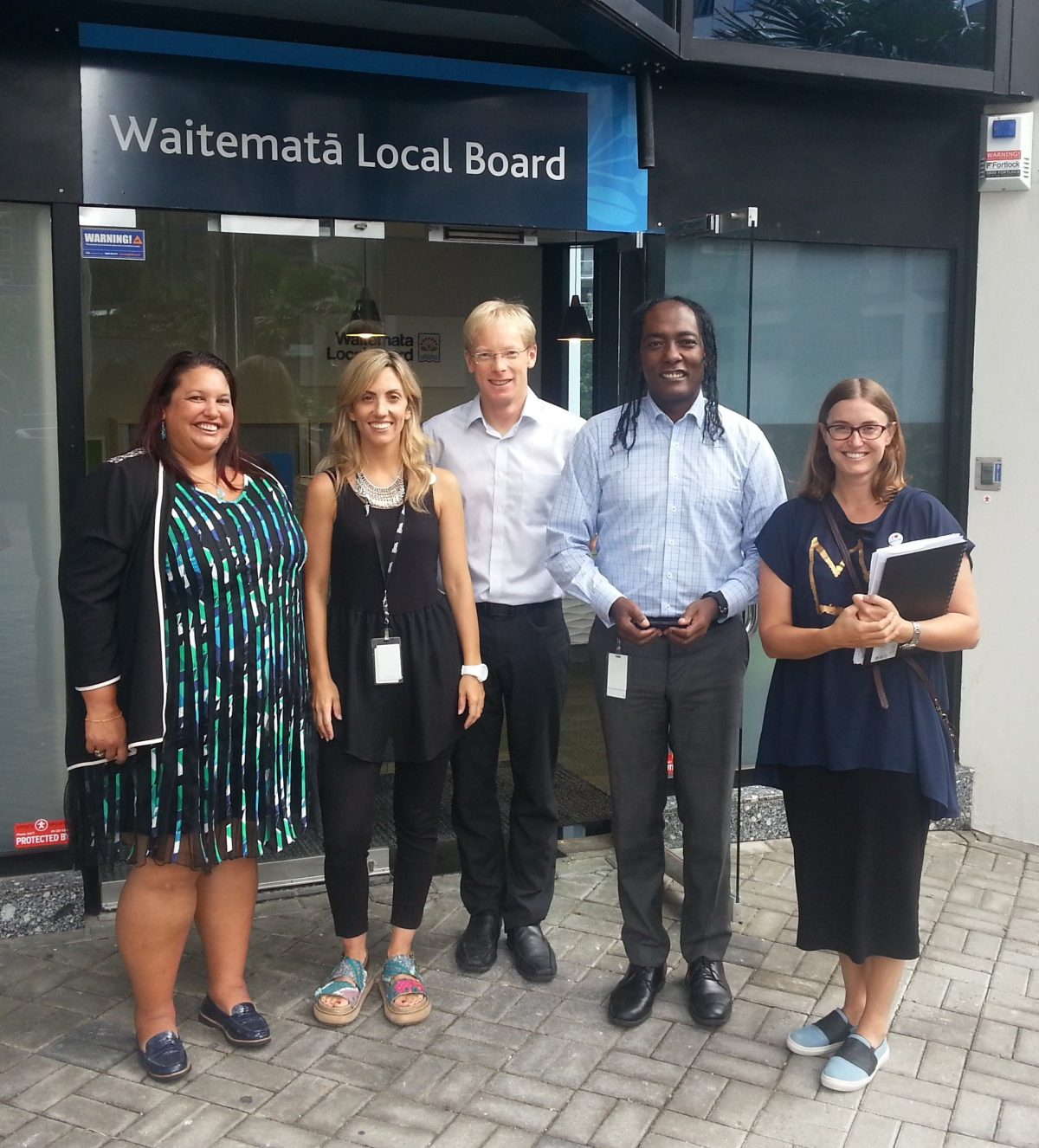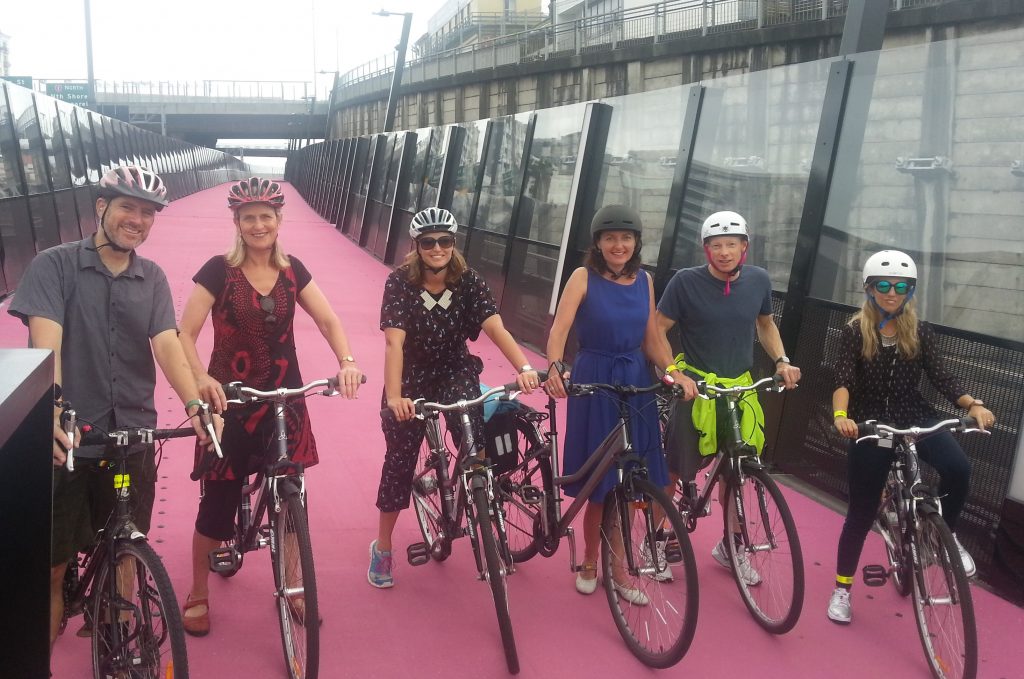Part of being a candidate standing in the Local Elections 2016 is responding to survey questions and pledges sought by a range of organisations. Groups like Generation Zero use it to give candidates a grade (I got an A!), for others the responses are just circulated to members. Hopefully the surveys are helpful in building up a fuller picture of what a candidate stands for and why they want to be elected. I’m standing with City Vision, a coalition of Greens, Labour and community independents. All 32 City Vision candidates are encouraged to follow up on any survey requests. Interestingly the C&R and Auckland Future candidates appear to have ignored all surveys.
As the responses take time and are often not published I thought I’d collate mine into one (long!) post.
This first one from NCW – Auckland Branch gives a good idea of the requests sent out to candidates.
On behalf of the Auckland Branch of the National Council of Women I am writing to acknowledge your candidacy in the upcoming Local Government elections. NCW stands for a gender equal Aotearoa/NZ and we want to see more women in leadership roles. We know that standing for public office is always a challenge and we are glad to see that you have made this decision.
We are writing, not only to make this acknowledgement, but also to ask a few questions of you.
- Name and position(s) you are standing for
Pippa Coom, standing for the Waitematā Local Board
- Why have you decided to stand for this/these positions?
I’ve been deputy chair of the Waitematā Local Board since 2010. It has been a privilege to represent Auckland’s city centre and central suburbs. As part of the City Vision-led board we have a strong track record of careful financial management, delivering on our promises and getting things done. I’m motivated to stand again as I feel there is still more to do as we work towards a fair, sustainable, vibrant and connected city for everyone to enjoy. We also have some great projects underway that I would like to see through including the upgrade of Ellen Melville Centre as city centre community hub.
- What do you think would assist in creating gender equality in Aotearoa/NZ?
To create gender equality I think we need equal pay, an end to violence against women and government policies that work to address current inequalities such as extending paid maternity leave, access to housing and education.
- What will you do, if elected, to assist in promoting gender equality?
As an elected representative I will support a living wage for all Council employees and contractors and a “’gender equality” audit to ensure Auckland Council is a gender equality employer.
I would like to continue the work of the Waitematā Local Board that promotes gender equality through community grants (for example to the Womens Centre) and support for White Ribbon.
Personally I always challenge anything I come across at Council that perpetuates gender inequality for example in a speaker programme or Council promotions using gender sterotypes
- What recommendations would you make to get young women involved in politics?
I think a good starting point is for young women to get active in their own communities first – to build up a network of support through church or sport groups; social, educational and cultural organisations; or advocacy groups.
In Waitematā we have a very active Youth Collective. The co-convenors are currently two young women. It is worthwhile getting involved to gain experience of how Council works and opportunities to engage with the community.
I would also recommend young women putting themselves forward for election at every level. Candidates like Adriana Christie, Michelle Atkinson, Brodie Hoare and Chloe Swarbrick have set an excellent example for young women.
Bike Auckland (no specific question just a request for a statement from candidates)
Short Version:
“I’m motivated to make Auckland a great cycling city of the world because there are so many benefits for everyone. Over the last six years, I’ve led the transport portfolio of the Waitematā Local Board supporting walking, cycling and public transport use, improved road safety, and a reduction in congestion and carbon emissions. Looking forward, my priorities include slower speeds in the city centre and residential streets, and implementing Vision Zero (working towards zero fatalities or serious injuries in Auckland). I’ll also work for changes to the give way rule to improve pedestrian safety; improved wayfinding; and opening up more greenways routes for walking and biking access (including the old Parnell tunnel).”
Longer Version:
I’m fond of the quote by the former Mayor of London Boris Johnston “a civilised city is a cyclised city” . I’m motivated to make Auckland a great cycling city of the world because there are so many benefits for everyone. Healthier people, less air pollution, safer streets, more transport choice, less congestion, less money spent on transport costs and more invested in the local economy.
It was my work as a cycling advocate for Cycle Action Auckland (now Bike Auckland) and as a coordinator of Frocks on Bikes- Auckland that got me interested in standing originally for the Waitemata Local Board when the super city was created in 2010. I wanted to be part of a new Council that invested in active modes and public transport.
I’ve now been lead of the Transport portfolio for the last six years working on transport initiatives that support walking, cycling and public transport use, improved road safety and a reduction in congestion and carbon emissions.
I’m fortunate to have been on a City Vision-led Waitemata Local Board that has been a huge champion for cycling investment We backed the interim transport levy to fund cycleways, we are all committed to Skypath and have invested a big chunk of our Local Board Transport capex fund (approx $450,000 per year) into our Greenways routes. We are seeing big increases in the number of people on bikes as the network grows in Waitemata. At every opportunity we push Auckland Transport to leverage maintenance budgets to benefit all road users and are commited to best practice cycleway design to separate riders from cars (and pedestrians).
The board only has a limited budget that can be put toward cycling so I would like to see a re-priorisation of the transport budget by Council/Auckland Transport towards active transport, the establishment of a Regional Greenways fund, and a renewal of the Urban Cycling Investment Fund ( I was a member of the UCF panel)
If re-elected I also have a number of transport priorities that will benefit cycling for example slower speeds in the city centre and residential streets, implementation of Vision Zero (working towards zero fatalities or serious injuries in Auckland), changes to the give way rule to improve pedestrian safety, roll out of improved wayfinding (including signs on No exit vehicle streets) , and opening up greenways routes (including the old Parnell tunnel ).
There is still lots to do and there are ongoing challenges dealing with Auckland Transport as a Local Board member but it feels like we have made huge progress over the last 6 years. Who would’ve imagined we’d have a magenta cycleway winning international awards only a few years ago! When I now see children cycling in previously inhospitable, dangerous places such as the Nelson Street cycleway I know we’re peddling in the right direction. We need to elect a progressive Mayor and Council that will continue the work underway, increase investment so we can all benefit from living in a great cycling city.
 Generation Zero Questions (online survey)
Generation Zero Questions (online survey)
What are your key priorities for improving transport in and around your local area?
I’ve been lead of the Transport portfolio for the last six years working on transport initiatives that support walking, cycling and public transport use, improved road safety and a reduction in congestion and carbon emissions.
If re-elected my priorities are slower speeds in the city centre and residential streets, implementation of Vision Zero (working towards zero fatalities or serious injuries in Auckland), changes to the give way rule to improve pedestrian safety, roll out of improved wayfinding, opening up greenways routes (including the old Parnell tunnel ) acceleration of the cycleways programme (including increased investment), continuing the implementation of residential parking zones in all our central city suburbs, improvements to local bus facilities and further work to improve the walking experience in Waitematā.
What are your thoughts on the Compact City model as espoused by the Auckland Plan, and as implemented by the Unitary Plan? (Think broadly about how this applies to Auckland, as well as how this applies to your local board area)
I support the compact city model and the objectives of the Auckland Plan. I would like to see Auckland grow through well planned intensification with affordable housing and housing choice. I supported the passing of the Unitary Plan but it is going to be a challenge to ensure density is done well, with quality and sustainable development that protects our heritage as these provisions were watered down. I strongly believe that as Auckland inevitably grows we need to make sure intensification is a success for everyone by bringing the community with us ( so that community input is a QIMBY debate)
I also think the Unitary Plan has enabled too much sprawl without the appropriate infrastructure investment from government. The Unitary Plan is only one tool that supports a compact city model and more pressure needs to be put on central government to build homes, invest in a rapid transport network, and make changes to the tax system so it doesn’t favour speculation and landbanking.
Do you support an increased focus on cycling investment by your local board? (This includes separated cycleways along streets, greenways projects through parks & low speed streets for safe neighbourhood.)
The City Vision-led Waitemata Local Board has been a huge champion for cycling investment We backed the interim transport levy to fund cycleways and have invested a big chunk of our Local Board Transport capex fund (approx $450,000 per year) into our Greenways routes. We are seeing big increases in the number of people on bikes as the network grows in Waitemata. The board only has a limited budget that can put toward cycling so I would like to see a re-priorisation of the transport budget by Council/Auckland Transport towards active transport, the establishment of a Regional Greenways fund, and a renewal of the Urban Cycling Investment Fund ( I was a member of the UCF panel)
As outlined in my transport priorities above I would like to continue the work to support cycling if re-elected.
How committed are you to taking action on issues of climate change in your position as an elected official, and if so what policies would you focus on?
The Waitematā Local Board was the first local board to set a goal to reduce carbon emissions locally (to support the Auckland Plan target) and to develop a Low Carbon Community Action Plan and set up a Low Carbon Community Network
I would like to continue this work if re-elected. I think cities, at every level, have to lead the way tackling the critical issue of climate change and must work with the community on climate action especially in NZ where the government is so useless and vision-less.
Auckland City Centre Residents Advisory Group (RAG)
If elected as a Waitemata Local Board Member for the 2016-2019 term of office:
- Would you support pedestrian priority throughout the city centre? If so, what measures would you promote to improve pedestrian priority?
I support the City Centre masterplan 2012 objectives to make the city centre accessible, distinct and vibrant.
This needs to be driven by prioritising pedestrians throughout the city centre to create a safe, pleasant walking environment that will benefit visitors, business and residents.
The Board has supported a number of initiatives that promote a walkable city centre for example shared spaces, street upgrades, route enhancements (removing slip lanes, new pedestrian crossings and increasing pedestrian phases at traffic lights) and opening up through links.
I think there is still more to do that will prioritise pedestrians for example lowering the speed limit, increasing shared spaces/pedestrian only zones, improving footpaths and wayfinding signage.
- Would you support a 30km speed limit in the city centre?
Yes (see above)
- Would you support converting Auckland Council vehicles to electric vehicles?
Auckland Council needs to be walking the talk with the management of an efficient, environmental fleet and travel management plans for all staff. I support a move to convert to electric vehicles as economically as possible but also encouraging staff to use public transport and the new e-bike fleet for business trips.
- What measures will you promote to improve the present bus services’ maintenance, quality, efficiency, and non-polluting environmental impact on the city centre?
I support outstanding public transport including high quality buses and frequent services. The new network to be rolled out next year will be an improvement but Auckland Transport needs to do more to improve efficiencies and the quality of buses.
- How will you advance making Hobson and Nelson Streets two-way roads and how soon do you envisage this happening?
The two-waying of Hobson and Nelson Streets has been a Waitemata Local Board objective since the first Local Board Plan in 2012. I would still like it to happen but I don’t think it is now realistic to progress until after the City Rail Link is open due to the pressure on these roads during the construction (and the closure of Albert Street).
In the meantime there is a lot more that can be done to make Hobson and Nelson Streets safe and attractive boulevards. The big improvements planned as part of the NZ convention centre will make a difference, as will enforcing the speed limit and the completion of the Nelson St cycleway phase 2 (that will link Nelson St to the Quay Street cycleway creating a loop around the city centre and more people using Nelson Street)
- What mode (rail/road) would you support if a second harbour crossing proceeds?
I support rail to the Shore as the number one priority for an alternative harbour crossing.
- Do you support prioritising/promoting light rail in the city centre?
Yes I support the plans for light rail progressing in the city centre.
- Would you support real-time monitoring of air quality at several points of high pedestrian count in the CBD by installing measuring devices at appropriate levels, the data from which would be available to the public online at all times?
Yes this is a Local Board objective that needs to be progressed (see pages 32 and 33 of the Local Board Plan)
- How would you ensure a satisfactory cleaning and maintenance programme for all city centre public infrastructure (roads, footpaths, gutters, trees/parks furniture, lighting etc)?
Levels of service for cleaning need to be maintained and improved in the city centre through better contractor oversight by Auckland Transport.
- Would you support Auckland city centre (and Auckland Council-wide) enforcement and compulsory compliance with binding comprehensive waste management and litter controls of the highest standard and practice?
I think enforcement needs to be one tool that Council uses to manage waste and litter control. I support education and information being used as the primary tools (for example when the roll out of the new user pays waste collection starts to discourage dumping). However if this approach doesn’t work then enforcement is needed. For example I support the targeting of cigarette litter through an enforcement approach as education and social pressure is not working.
- Do you see a need to preserve, enhance and extend green space in the central city for an increasing number of central city residents, including families?
The Local Board has been working to preserve and enhance long-neglected green space in the city centre. For example the board has been instrumental in securing the budget for the Myers Park upgrade and is working to upgrade Albert Park with improved paths, CCTV and lighting. Land values in Auckland are such that it is impossible in the context of a Local Board budget to purchase more land so we focus on protecting and enhancing the green space for which we have responsibility.
I support plans underway to extend green space. For example, the Green Link that will create a linear park from Victoria Park to Albert Park and the green spaces in Wynyard Quarter.
This is also more we can do to enhance existing green spaces for example introducing more play areas and improving connections. For example we are working to improve the connections to the Domain that will benefit city centre residents.
- If Queen Elizabeth Square is not sold, would you support keeping it as public open space and funding the CRL tunnel out of general funds?
QE Square has already been sold. I support the funds being used to develop new civic spaces in the waterfront area, like the Admiralty Steps. I don’t think it would be a good use of Council funds to direct any sale proceeds to the CRL tunnel. The government needs to fund any CRL shortfall.
- In your view, has Auckland Council adequately recognised and provided for the protection of historic heritage in the city centre from inappropriate subdivision, use or development? If not, what do you think should be done to achieve this?
The City Centre planning rules are unchanged in the final Unitary Plan so existing historic heritage protection is generally maintained but not enhanced – although the K Road Conservation Area is a notable exception – which means there are buildings that still need additional protection. The means available now that the UP has been passed is by private plan change and we will be committed to researching and advancing these plan changes being lodged.
I am also concerned that design and sustainability rules have been relaxed in the Unitary Plan so it will be harder to push back against inappropriate development.
- What is your view of the Ports of Auckland or Auckland Council reclaiming the harbour, or extending wharves further into the harbour?
I don’t support Ports of Auckland extending its footprint any further and would like Ports to hand over Captain Cook wharf (the one with cars?) for public space.
- What do you understand “Auckland is a peace city” to mean and what actions would you take to support Auckland as a peace city?
In August 2011 the Board voted to support Auckland being confirmed as a “City for Peace”.
I strongly support Auckland remaining a City for Peace and if re-elected will respond positively to, and support, local initiatives – events, commemorations and recognition of peace-making activities, tree planting etc as recommended in the City for Peace toolkit (developed by Council and the Peace Foundation).
- What would your stance as a peace city councillor/local board member be if nuclear-capable ships visit Auckland in November for the NZ Navy’s 75th anniversary commemorations?
I don’t support nuclear – capable ships visiting Auckland in contravention of the NZ Nuclear Free Zone Act. I would not attend any events associated with the visit of a nuclear capable ship.
- What is your immediate plan for providing emergency housing for the homeless/itinerant people currently residing in streets and alleyways in the CBD and what are your plans for Auckland Council to provide social housing?
I am working with Deborah Yates as community portfolio holders to investigate options for a night shelter as part of a housing first strategy and support the homeless action plan initiatives (such as providing temporary lockers and showers).
Action on homelessness is one of my priorities if I am re-elected
- Would you ensure that Council staff and contractors who work for the Council are paid the living wage ($19.80 per hour)?
I support the living wage for Council staff and contractors
- Would you support the 24-7 enforcement of all bylaws and NZ legislation regarding the sale and consumption of alcohol in the central city? (Location, number and opening hours for off- and on-licence liquor outlets; and, increasing the number of “alcohol free” zones in the city centre)
Yes
- What are your views on the Local Alcohol Policy?
The Local Board reviewed the LAP earlier this year. We sought to balance the need to reduce alcohol-related harm and disorder with the role of the city centre as a centre of entertainment. We undertook the special consultative procedure required by law, carefully considered the many public submissions and, I believe, we reached a sensible balance between the competing considerations. We generally took an approach of least change to the rules regarding alcohol consumption in reserves.
- Would you support the creation of a Waitematā Local Area “City Centre” electoral subdivision?
I think this warrants investigation.
There are pros/cons to having board members elected from Waitemata as a whole.
I have also responded to the Grafton Residents Association survey, signed the Living Wage pledge, the Jobs that Count pledge, signed up to ethical tendering for bus drivers and responded to the Show your Love candidate questions on the Auckland Council Local Elections 2016 website
If I’m made aware any surveys I have missed I will respond as soon as possible.













